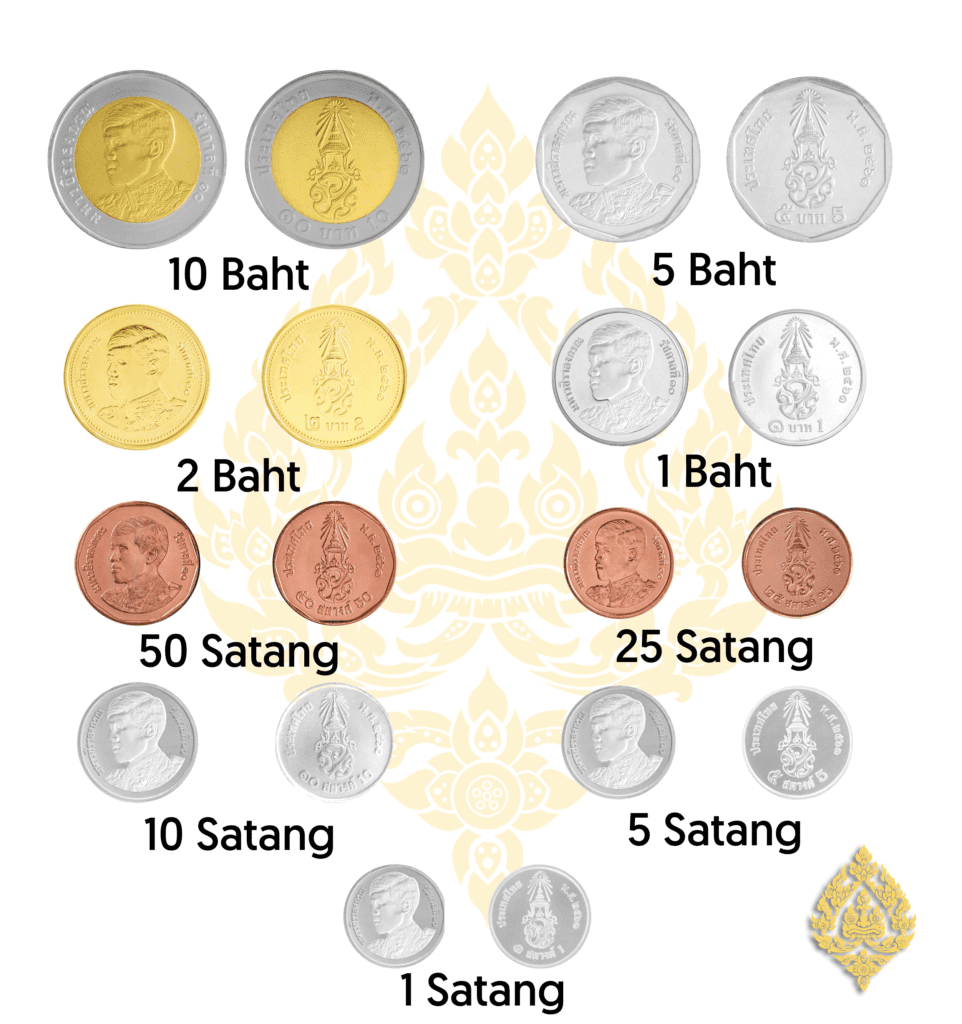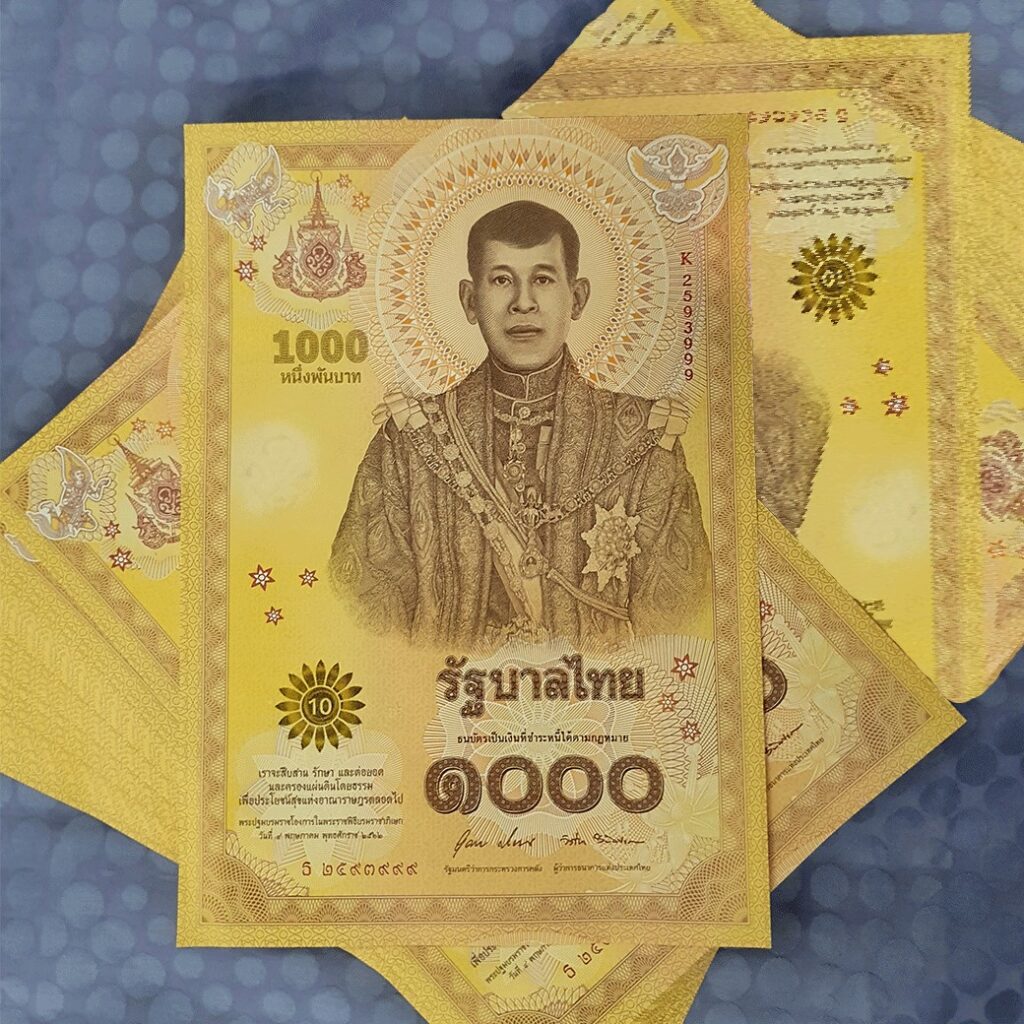Thailand Currency or Baht is as same as the currencies in the world with multiple denominations available in both coins and notes. It might be confusing at first to handle the currency notes and coins as it might confuse you. This article might help figure out the Thai currency as well as some tips on exchange value.
Coin Denominations

- 1 Satang (1/100 Baht)
- 5 Satang (5/100 Baht)
- 10 Satang (10/100 Baht)
- 25 Satang (25/100 Baht)
- 50 Satang (50/100 Baht)
- 1 Baht – Steel colour
- 2 Baht – Gold Colour
- 5 Baht – Little bigger but looks similar to 1 Baht
- 10 Baht – Gold on the inside and steel colour on the outside. The coin is much bigger than 5 Baht.
The Thai Satang is virtually non-existent as I never saw it even once. All the prices are one baht and above so you won’t be using satang anytime soon.
Notes Denominations

- 20 Baht – Green Colour
- 50 Baht – Blue Colour
- 100 Baht – Pink Colour
- 500 Baht – Lavender Colour
- 1000 Baht – Mixed Colour
Identifying these notes are very easy because of the colour differences and size. The notes are made from good paper but they can torn easily so beware.
Tips to exchange your currency to Thai Baht
- Exchange your notes in your origin country itself for a good deal
- Never exchange at an Airport
- You can find a favourable currency exchange rate in Pattaya. Look for small yellow box-like exchange shops.
- Use Bangkok Bank ATM to draw cash. It gives you a much better exchange rate and charges you just 220 Baht per transaction.
- Never step on the currency.


